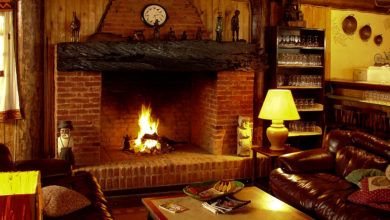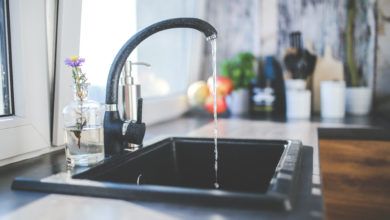Camping is one outdoor activity that many people look forward to in summer; some die-hard outdoor enthusiasts even look forward to camping any time of the year. No matter how much people profess their desire to leave civilization behind from time to time and enjoy nature, the majority wouldn’t play with their food and drinks on such expeditions.
To ensure that you have all that’s needed as far as food is concerned, you would need to pack the right kind of food, the right quantity and keep them dry, fresh and whole. We have taken time to research and are glad to bring to you fail-proof tips that would help you pack for your camping like a pro. Here are some of those tips…
Pre-Packing Preparation
- Choose a minimum of two solid and top quality coolers: In packing your food items, remember that the minimum number of coolers you would need is two; one for food and the other for drinks. Ensure that those coolers are top quality and can withstand any weather condition or rough terrain. Also, bear in mind that your coolers can serve as stools and seats hence the need for durability and strength in the coolers. If you are feeding a large number of persons and would be spending more than a day, you might consider having a cooler for each day so that the other coolers would remain unopened until they are needed. This would allow the ice to keep for a longer time.
- Organize your menu/meal plan: It is necessary that you make a list of every item you’ll need for the number of meals you’ll have and what quantity is required. Ensure that the food you plan to take is such that can be pre-cooked or easily prepared with minimal utensils and equipment.
- Reduce your food prep time: You can do this by cutting up fruits and veggies and putting them in plastic containers; you can also wash items like lettuce, wrap them in paper towels and put in Ziploc or similar bags.
- Keep food properly sealed and dry: Check that food packages are well sealed. To be safe, it’s advisable to remove the food from original packages and place in sealable bags. This would guarantee that your food would remain dry and not get soggy when the ice melts.
- Label food items: This helps you to keep your cooler well organized, save you time and stress in locating whatever you need and also help the ice last longer.
- Keep your food frozen and cold: It is advisable to marinate and freeze your meat, keep seafood frozen and chill others that shouldn’t be frozen. Do not pack warm food or food at room temperature.
- Prepare your ice cubes and blocks ahead of time: Apart from making ice cubes and blocks, you should freeze water in bottles; remembering to leave some space for expansion (the advantage of freezing water in bottles is that you can drink the water when the ice melts).
- Ensure that your cooler is cold before you start packing: If you have an industrial freezer, you can keep the coolers in them overnight but if not, look for the coolest part of the house or keep the coolers outside overnight. Another suggestion is to cool it down overnight with a bag of ice. Never pack your food in a cooler that you brought straight out of the attic or garage; the temperature of the cooler would be warm and would impact negatively on the items stored in it.
Packing
Carefully place ice cubes or blocks at the bottom of the coolers: The number of days you would spend on the trip determines whether you should use ice cubes or ice blocks. For longer trips (three days and above) you are advised to use ice blocks because they take a longer time to thaw. Ice blocks may require extra effort to chip off some bits for your drinks but which would you prefer: warm drinks or contaminated food?
When you have placed your ice at the bottom of the cooler, place a waterproof thin cover over it (Could be plastic or any other covering that would not block the chill of the ice). This is to prevent small food items from falling through the cracks into the ice. Another way to stop small food items from falling into cracks between the ice is to place them in tote bags before packing into the cooler.
Pack according to weight and need for ice: Start by placing heavy items at the bottom of the cooler and proceed with the lighter ones. Also, place items that need to remain frozen closer to the ice. Remember to place the items according to when they’ll be used to avoid having to search through you cooler when you need an item. If you pack your food haphazardly, you would waste the chill of the ice by the length of time you would have to spend looking for items.
Minimize unnecessary weight: There are items that would just add unnecessary bulk and weight to your cooler. If the original package of a food item is bulky, look for a smaller and lighter alternative. A good example is a ketchup or mayonnaise; if you don’t need the full bottle, it doesn’t make sense to tote the whole bottle to and from your destination. Scoop out the quantity you require a small plastic container with cover. Taking just the right quantity of food item needed in smaller and lighter containers also help you conserve space.
Ensure that there’s no empty space between food items: Pack your food as tightly as you can without squashing them and then fill up empty space with ice.
Avoid cross-contamination of food: This can be achieved by ensuring that every food item is placed separately in a container or plastic bag that is properly sealed before placing them in the cooler. If you have large quantities of raw food like meat, fish or seafood, it is safer to take a separate cooler for these items as mixing them with ready-to-eat items is a recipe for food poisoning.
Conclusion
We cannot overemphasize the importance of planning ahead when embarking on any kind of camping trip. Proper planning and organization would save you time, money and stress. Avoid having to throw out food by putting in the extra effort required to plan a menu, organize the items needed and pack them appropriately. Do not allow a lack of organization to rob you of a stress-free time out with your loved ones and friends. We believe that if you follow the tips we’ve shared, you’ll be packing coolers for your camping trips like a pro.





